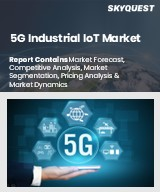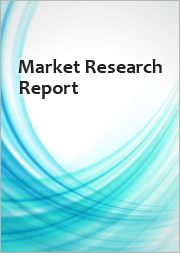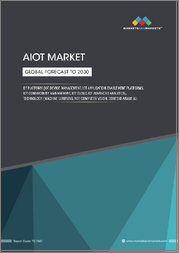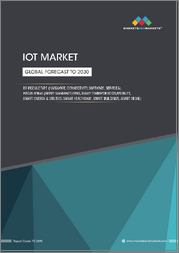
|
시장보고서
상품코드
1751461
미국의 사물인터넷(IoT) 시장 규모, 점유율, 동향 분석 보고서 : 컴포넌트별, 전개 형태별, 접속성별, 최종 용도별, 부문 예측(2025-2030년)U.S. Internet Of Things Market Size, Share & Trends Analysis Report By Component (Hardware, Software, Services), By Deployment (On-premise, Cloud), By Connectivity (Zigbee, Bluetooth, Z-Wave), By End Use, And Segment Forecasts, 2025 - 2030 |
||||||
미국의 사물인터넷(IoT) 시장 규모와 동향 :
미국의 사물인터넷 시장 규모는 2024년 4,132억 2,000만 달러로 추산되며, 2025-2030년 연평균 7.6%의 성장률을 보일 것으로 예측됩니다.
시장의 주요 원동력은 스마트 기기에 대한 수요 증가, 제조업의 산업용 IoT(IIoT) 확산, 스마트 시티 및 인프라를 지원하는 정부 이니셔티브의 확대입니다. 또한, 소매, 헬스케어, 농업 등의 분야에서 미국 내 주요 기술 기업의 존재에 힘입어 IoT 솔루션의 통합이 빠르게 진행되고 있으며, 이는 미국 사물인터넷(IoT) 산업의 향후 확장을 촉진하고 있습니다.
미국의 사물인터넷(IoT) 시장 산업의 주요 원동력은 인공지능(AI)과 클라우드/엣지 컴퓨팅의 통합으로 실시간 분석, 자동화, 확장 가능한 IoT 배포를 가능하게 합니다. 소프트웨어 중심의 IoT 솔루션으로의 전환은 기존의 하드웨어 중심 모델을 변화시키고 산업 전반의 디지털 전환을 가속화하고 있으며, AI 알고리즘을 활용하여 IoT 시스템은 대량의 센서 데이터를 해석하여 지능적이고 자율적인 의사결정을 내릴 수 있도록 지원합니다. 예지보전을 강화하고, 운영 효율성을 향상시키며, 헬스케어, 물류, 제조 등의 분야에서 능동적인 개입을 가능하게 합니다.
5G 네트워크와 LTE-M 및 NB-IoT와 같은 저전력 광역 네트워크(LPWAN)의 보급은 미국의 사물인터넷(IoT) 시장의 기기 연결을 강화하는 중요한 트렌드 중 일부입니다. 이러한 기술은 저지연, 확장된 커버리지, 에너지 효율을 제공하며, 스마트 시티, 커넥티드카, 산업 자동화에서 새로운 이용 사례를 가능하게 합니다. 프라이빗 5G 네트워크와 멀티 프로파일 eSIM 솔루션의 확장은 확장 가능하고 안전한 IoT 배포를 더욱 지원하고 미국 사물인터넷 산업의 성장을 가속화할 것입니다.
또한, 커넥티드 디바이스 증가와 함께 IoT 보안은 미국 시장에서 큰 관심사가 되고 있습니다. IoT 생태계를 보호하기 위한 보다 강력한 암호화 프로토콜, 다단계 인증, 블록체인, AI 기반 위협 감지 등 IoT 보안의 발전은 IoT 생태계를 보호하는 데 큰 도움이 될 것으로 보입니다. 이러한 발전은 데이터 프라이버시 및 사이버 위협에 대한 우려가 높아짐에 따라 기업 및 소비자의 IoT 도입을 가속화하는 데 있어 매우 중요합니다. 이러한 발전은 향후 몇 년 동안 이 부문의 성장을 가속할 것으로 예측됩니다.
또한, 미국 기업들은 연결성, 보안, 실시간 데이터 처리를 강화하기 위해 5G 및 엣지 컴퓨팅 기술에 많은 투자를 하고 있으며, IoT 솔루션을 중시하는 미국 기업들은 제조, 스마트 인프라, 헬스케어 등 산업별 니즈에 맞게 제품을 맞춤화하고, 채널 파트너십 및 생태계 연계를 최적화하여 시장 도달 범위를 확대하고 운영 효율성을 높이고 있습니다. 맞춤형 제품을 제공하는 한편, 채널 파트너십 및 생태계와의 연계를 최적화하여 시장 도달 범위를 확대하고 업무 효율성을 향상시키고 있습니다. 주요 기업들의 이러한 전략은 향후 몇 년 동안 미국 사물인터넷 산업의 확장을 촉진할 것으로 예측됩니다.
목차
제1장 조사 방법과 범위
제2장 주요 요약
제3장 미국의 사물인터넷(IoT) 시장 - 업계 전망
- 시장 계통 전망
- 시장 역학
- 미국의 사물인터넷(IoT) 시장 분석 툴
제4장 미국의 사물인터넷(IoT) 시장 : 컴포넌트별 추정, 동향 분석
- 컴포넌트별 변동 분석과 시장 점유율, 2024년 및 2030년
- 컴포넌트별
- 하드웨어
- 소프트웨어
- 서비스
제5장 미국의 사물인터넷(IoT) 시장 : 전개 형태별 추정, 동향 분석
- 전개 형태별 변동 분석과 시장 점유율, 2024년 및 2030년
- 전개 형태별
- On-Premise
- 클라우드
제6장 미국의 사물인터넷(IoT) 시장 : 접속성별 추정, 동향 분석
- 접속성별 변동 분석과 시장 점유율, 2024년 및 2030년
- 접속성별
- Zigbee
- Bluetooth
- Z-Wave
- 기타
제7장 미국의 사물인터넷(IoT) 시장 : 최종 용도별 추정, 동향 분석
- 최종 용도별 변동 분석과 시장 점유율, 2024년 및 2030년
- 최종 용도별
- 가전
- 웨어러블 디바이스
- 자동차 및 운송
- 은행, 금융서비스 및 보험(BFSI)
- 헬스케어
- 소매
- 빌딩 자동화
- 석유 및 가스
- 농업
- 항공우주 및 방위
- 기타
제8장 미국의 사물인터넷(IoT) 시장 - 경쟁 구도
- 기업 분류
- 기업의 시장 포지셔닝
- 기업 히트맵 분석
- 기업 개요/상장기업
- AT&T
- Celona, Inc.
- SAP SE
- PTC Inc.
- Cisco Systems, Inc.
- IBM Corporation
- Microsoft Corporation
- Intel Corporation
- Siemens AG
- Amazon Web Services(AWS)
- Oracle Corporation
- General Electric Company(GE)
U.S. Internet Of Things Market Size & Trends:
The U.S. internet of things market size was estimated at USD 413.22 billion in 2024 and is projected to grow at a CAGR of 7.6% from 2025 to 2030. The market is primarily driven by increasing demand for smart devices, widespread adoption of Industrial IoT (IIoT) in manufacturing, and growing government initiatives supporting smart cities and infrastructure. Additionally, sectors such as retail, healthcare, and agriculture are rapidly integrating IoT solutions, supported by the presence of major technology players in the U.S., thereby driving the U.S. internet of things (IoT) industry expansion in the coming years.
A key driver of the U.S. IoT industry is the integration of artificial intelligence (AI) and cloud/edge computing, which enables real-time analytics, automation, and scalable IoT deployments. This shift toward software-centric IoT solutions is transforming traditional hardware-heavy models and accelerating digital transformation across industries. By leveraging AI algorithms, IoT systems can interpret massive volumes of sensor data to make intelligent, autonomous decisions, enhancing predictive maintenance, improving operational efficiency, and enabling proactive interventions in sectors such as healthcare, logistics, and manufacturing.
The proliferation of 5G networks and low-power wide-area networks (LPWAN) such as LTE-M and NB-IoT are some of the critical trends enhancing IoT device connectivity in the U.S. These technologies offer low latency, extended coverage, and energy efficiency, enabling new use cases in smart cities, connected vehicles, and industrial automation. The expansion of private 5G networks and multi-profile eSIM solutions further supports scalable and secure IoT deployments, thereby accelerating the U.S. internet of things industry growth.
Furthermore, with the growing number of connected devices, IoT security has become a major focus in the U.S. market. Trends include the adoption of stronger encryption protocols, multi-factor authentication, blockchain, and AI-driven threat detection to safeguard IoT ecosystems. These advancements address increasing concerns over data privacy and cyber threats, which are crucial for accelerating enterprise and consumer IoT adoption. Such advancements are expected to drive the segmental growth in the coming years.
Moreover, U.S. companies are investing heavily in 5G and edge computing technologies to enhance connectivity, security, and real-time data processing. Emphasizing vertical-specific IoT solutions, U.S. firms tailor offerings to industry needs such as manufacturing, smart infrastructure, and healthcare, while optimizing channel partnerships and ecosystem collaborations to expand market reach and improve operational efficiency. Such strategies by key companies are expected to drive the U.S. internet of things industry expansion in the coming years.
U.S. Internet Of Things Market Report Segmentation
This report forecasts revenue growth at the country level and provides an analysis of the latest industry trends in each of the sub-segments from 2018 to 2030. For this study, Grand View Research has segmented the U.S. internet of things market report based on component, deployment, connectivity, and end use:
- Component Outlook (Revenue, USD Billion, 2018 - 2030)
- Hardware
- Software
- Services
- Deployment Outlook (Revenue, USD Billion, 2018 - 2030)
- On-premise
- Cloud
- Connectivity Outlook (Revenue, USD Billion, 2018 - 2030)
- Zigbee
- Bluetooth
- Z-Wave
- Others
- End Use Outlook (Revenue, USD Billion, 2018 - 2030)
- Consumer Electronics
- Wearable Devices
- Automotive & Transportation
- BFSI
- Healthcare
- Retail
- Building Automation
- Oil & Gas
- Agriculture
- Aerospace & Defense
- Others
Table of Contents
Chapter 1. Methodology and Scope
- 1.1. Market Segmentation & Scope
- 1.2. Market Definitions
- 1.3. Information Procurement
- 1.3.1. Information analysis
- 1.3.2. Market formulation & data visualization
- 1.3.3. Data validation & publishing
- 1.4. Research Scope and Assumptions
- 1.4.1. List to Data Sources
Chapter 2. Executive Summary
- 2.1. Market Outlook
- 2.2. Segment Outlook
- 2.3. Competitive Insights
Chapter 3. U.S. Internet of Things Market - Industry Outlook
- 3.1. Market Lineage Outlook
- 3.2. Market Dynamics
- 3.2.1. Market Driver Analysis
- 3.2.2. Market Restraint Analysis
- 3.2.3. Deployment Challenge
- 3.3. U.S. Internet of Things (IoT) Market Analysis Tools
- 3.3.1. Deployment Analysis - Porter's
- 3.3.1.1. Bargaining power of the suppliers
- 3.3.1.2. Bargaining power of the buyers
- 3.3.1.3. Threats of substitution
- 3.3.1.4. Threats from new entrants
- 3.3.1.5. Competitive rivalry
- 3.3.2. PESTEL Analysis
- 3.3.2.1. Political landscape
- 3.3.2.2. Economic landscape
- 3.3.2.3. Social landscape
- 3.3.2.4. Technological landscape
- 3.3.2.5. Environmental landscape
- 3.3.2.6. Legal landscape
- 3.3.1. Deployment Analysis - Porter's
Chapter 4. U.S. Internet of Things: Component Estimates & Trend Analysis
- 4.1. Component Movement Analysis & Market Share, 2024 & 2030
- 4.2. U.S. Internet of Things Market Estimates & Forecast, By Component (USD Billion)
- 4.2.1. Hardware
- 4.2.1.1. Hardware Market Estimates and Forecasts, 2018 - 2030 (USD Billion)
- 4.2.2. Software
- 4.2.2.1. Software Market Estimates and Forecasts, 2018 - 2030 (USD Billion)
- 4.2.3. Services
- 4.2.3.1. Services Market Estimates and Forecasts, 2018 - 2030 (USD Billion)
- 4.2.1. Hardware
Chapter 5. U.S. Internet of Things: Deployment Estimates & Trend Analysis
- 5.1. Deployment Movement Analysis & Market Share, 2024 & 2030
- 5.2. U.S. Internet of Things Market Estimates & Forecast, By Deployment (USD Billion)
- 5.2.1. On-premise
- 5.2.1.1. On-premises Market Estimates and Forecasts, 2018 - 2030 (USD Billion)
- 5.2.2. Cloud
- 5.2.2.1. Cloud Market Estimates and Forecasts, 2018 - 2030 (USD Billion)
- 5.2.1. On-premise
Chapter 6. U.S. Internet of Things: Connectivity Estimates & Trend Analysis
- 6.1. Connectivity Movement Analysis & Market Share, 2024 & 2030
- 6.2. U.S. Internet of Things Market Estimates & Forecast, By Connectivity (USD Billion)
- 6.2.1. Zigbee
- 6.2.1.1. Zigbee Market Estimates and Forecasts, 2018 - 2030 (USD Billion)
- 6.2.2. Bluetooth
- 6.2.2.1. Bluetooth Market Estimates and Forecasts, 2018 - 2030 (USD Billion)
- 6.2.3. Z-Wave
- 6.2.3.1. Z-Wave Market Estimates and Forecasts, 2018 - 2030 (USD Billion)
- 6.2.4. Others
- 6.2.4.1. Others Market Estimates and Forecasts, 2018 - 2030 (USD Billion)
- 6.2.1. Zigbee
Chapter 7. U.S. Internet of Things: End Use Estimates & Trend Analysis
- 7.1. End Use Movement Analysis & Market Share, 2024 & 2030
- 7.2. U.S. Internet of Things Market Estimates & Forecast, By End Use (USD Billion)
- 7.2.1. Consumer Electronics
- 7.2.1.1. Consumer Electronics Market Estimates and Forecasts, 2018 - 2030 (USD Billion)
- 7.2.2. Wearable Devices
- 7.2.2.1. Wearable Devices Market Estimates and Forecasts, 2018 - 2030 (USD Billion)
- 7.2.3. Automotive & Transportation
- 7.2.3.1. Automotive & Transportation Market Estimates and Forecasts, 2018 - 2030 (USD Billion)
- 7.2.4. BFSI
- 7.2.4.1. BFSI Market Estimates and Forecasts, 2018 - 2030 (USD Billion)
- 7.2.5. Healthcare
- 7.2.5.1. Healthcare Market Estimates and Forecasts, 2018 - 2030 (USD Billion)
- 7.2.6. Retail
- 7.2.6.1. Retail Market Estimates and Forecasts, 2018 - 2030 (USD Billion)
- 7.2.7. Building Automation
- 7.2.7.1. Building Automation Market Estimates and Forecasts, 2018 - 2030 (USD Billion)
- 7.2.8. Oil & Gas
- 7.2.8.1. Oil & Gas Market Estimates and Forecasts, 2018 - 2030 (USD Billion)
- 7.2.9. Agriculture
- 7.2.9.1. Agriculture Market Estimates and Forecasts, 2018 - 2030 (USD Billion)
- 7.2.10. Aerospace & Defense
- 7.2.10.1. Aerospace & Defense Market Estimates and Forecasts, 2018 - 2030 (USD Billion)
- 7.2.11. Others
- 7.2.11.1. Others Market Estimates and Forecasts, 2018 - 2030 (USD Billion)
- 7.2.1. Consumer Electronics
Chapter 8. U.S. Internet of Things Market - Competitive Landscape
- 8.1. Company Categorization
- 8.2. Company Market Positioning
- 8.3. Company Heat Map Analysis
- 8.4. Company Profiles/Listing
- 8.4.1. AT&T
- 8.4.1.1. Participant's Overview
- 8.4.1.2. Financial Performance
- 8.4.1.3. Product Benchmarking
- 8.4.1.4. Recent Developments
- 8.4.2. Celona, Inc.
- 8.4.2.1. Participant's Overview
- 8.4.2.2. Financial Performance
- 8.4.2.3. Product Benchmarking
- 8.4.2.4. Recent Developments
- 8.4.3. SAP SE
- 8.4.3.1. Participant's Overview
- 8.4.3.2. Financial Performance
- 8.4.3.3. Product Benchmarking
- 8.4.3.4. Recent Developments
- 8.4.4. PTC Inc.
- 8.4.4.1. Participant's Overview
- 8.4.4.2. Financial Performance
- 8.4.4.3. Product Benchmarking
- 8.4.4.4. Recent Developments
- 8.4.5. Cisco Systems, Inc.
- 8.4.5.1. Participant's Overview
- 8.4.5.2. Financial Performance
- 8.4.5.3. Product Benchmarking
- 8.4.5.4. Recent Developments
- 8.4.6. IBM Corporation
- 8.4.6.1. Participant's Overview
- 8.4.6.2. Financial Performance
- 8.4.6.3. Product Benchmarking
- 8.4.6.4. Recent Developments
- 8.4.7. Microsoft Corporation
- 8.4.7.1. Participant's Overview
- 8.4.7.2. Financial Performance
- 8.4.7.3. Product Benchmarking
- 8.4.7.4. Recent Developments
- 8.4.8. Intel Corporation
- 8.4.8.1. Participant's Overview
- 8.4.8.2. Financial Performance
- 8.4.8.3. Product Benchmarking
- 8.4.8.4. Recent Developments
- 8.4.9. Siemens AG
- 8.4.9.1. Participant's Overview
- 8.4.9.2. Financial Performance
- 8.4.9.3. Product Benchmarking
- 8.4.9.4. Recent Developments
- 8.4.10. Amazon Web Services (AWS)
- 8.4.10.1. Participant's Overview
- 8.4.10.2. Financial Performance
- 8.4.10.3. Product Benchmarking
- 8.4.10.4. Recent Developments
- 8.4.11. Oracle Corporation
- 8.4.11.1. Participant's Overview
- 8.4.11.2. Financial Performance
- 8.4.11.3. Product Benchmarking
- 8.4.11.4. Recent Developments
- 8.4.12. General Electric Company (GE)
- 8.4.12.1. Participant's Overview
- 8.4.12.2. Financial Performance
- 8.4.12.3. Product Benchmarking
- 8.4.12.4. Recent Developments
- 8.4.1. AT&T
(주말 및 공휴일 제외)









